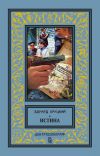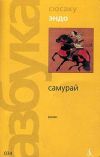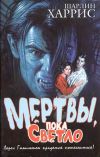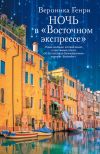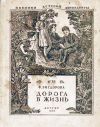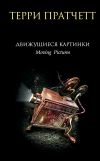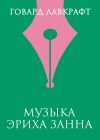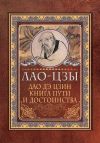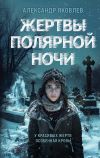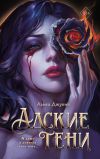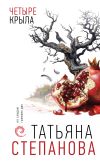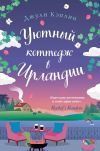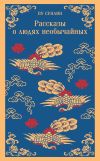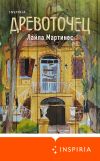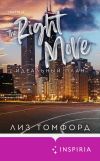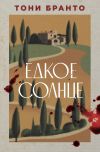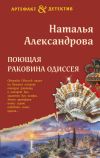
Автор книги: Игорь Евтишенков
Жанр: Языкознание, Наука и Образование
Возрастные ограничения: +16
сообщить о неприемлемом содержимом
Текущая страница: 4 (всего у книги 7 страниц)
Устная часть
Task 1
You are going to read the text aloud. You have 1.5 minutes to read the text silently, and then be ready to read it aloud. Remember that you will not have more than 2 minutes for reading aloud.
The first English grammar, Pamphlet for Grammar by William Bullokar, written with the seeming goal of demonstrating that English was quite as rule-bound as Latin, was published in 1586. Bullokar’s grammar was faithfully modeled on William Lily’s Latin grammar, Rudimenta Grammatices in 1534. Lily’s grammar was being used in schools in England at that time, having been «prescribed» for them in 1542 by Henry VIII. Although Bullokar wrote his grammar in English and used a «reformed spelling system» of his own invention, many English grammars, for much of the century after Bullokar’s effort, were to be written in Latin; this was especially so for books whose authors were aiming to be scholarly. Christopher Cooper’s Grammatica (1685) was the last English grammar written in Latin.
Task 2
You are going to take part in a telephone survey. You have to answer six questions. Give full answers to the questions. Remember that you have 40 seconds to answer each question.
Electronic assistant: Hello! It’s the electronic assistant of the City Library. We kindly ask you to take part in our survey. We need to find out how students feel about books and libraries. Please answer six questions. The survey is anonymous – you don’t have to give your name. So, let’s get started.
Electronic assistant: What kind of books and magazines do you prefer to read?
Student:____________________________________________________________
Electronic assistant: Who is your favourite writer and why?
Student:____________________________________________________________
Electronic assistant: How often do you go to the library and borrow books?
Student:____________________________________________________________
Electronic assistant: Why do you think people are reading fewer paper books now?
Student:____________________________________________________________
Electronic assistant: Can reading English books help students improve their English?
Student:____________________________________________________________
Electronic assistant: What kind of books and magazines would you recommend your friends read at leisure at the weekend and why?
Student:____________________________________________________________
Electronic assistant: This is the end of the survey. Thank you very much for your help.
Task 3
You are going to give a talk about national holidays in Russia. You will have to start in 1.5 minutes and speak for not more than 2 minutes (10—12 sentences).
Remember to say:
• what the most popular national holidays in Russia are;
• how you and your family celebrate them;
• what other people usually do during the national holidays;
• what you favourite holiday is and why.
You have to talk continuously.
TEST 5
Раздел 1 (задания по аудированию)
Вы услышите четыре коротких текста, обозначенных буквами А, B, C, D. В заданиях 1—4 запишите в поле ответа цифру 1, 2 или 3, соответствующую выбранному Вами варианту ответа. Вы услышите запись дважды.
1. The visitor to a shop is looking for…
1) check-out lines.
2) a section with books in foreign languages.
3) an easy book to read about his native city.
Ответ: _______
2. A student in the college library wants to know…
1) how an electronic catalogue works.
2) how many copies of materials he can make.
3) for how long he can borrow books and magazines.
Ответ: _______
3. Why is Jackie going to join her friend?
1) because she is awfully tired.
2) because she has run a marathon.
3) because she wants to eat.
Ответ: _______
4. What artists are exhibited in the art gallery?
1) John Ronald Reuel Tolkien.
2) Joseph Rudyard Kipling.
3) Both.
Ответ: _______
5
Вы готовите тематическую радиопередачу с высказываниями пяти разных людей, обозначенных буквами А, В, С, D, Е. Подберите к каждому высказыванию соответствующую его содержанию рубрику из списка 1—6.
Используйте каждую рубрику из списка только один раз. В списке есть одна лишняя рубрика. Вы услышите запись дважды.
1. It’s upsetting.
2. It’s boring.
3. It’s breath-taking
4. It’s emotional.
5. It’s eye-attracting
6. It’s exciting.
Запишите в таблицу выбранные цифры под соответствующими буквами.
Говорящий …A… B… C… D… E
Рубрика
***********************
Вы помогаете своему другу, юному радиожурналисту, проанализировать подготовленное им для передачи интервью. Прослушайте аудиозапись интервью и занесите данные в таблицу. Вы можете вписать не более одного слова (без артиклей) из прозвучавшего текста. Числа необходимо записывать буквами. Вы услышите запись дважды.
6. The number of the academic year he/she is in
7. The most difficult school subject
8. Regular sports activity
9. Day off
10. The foreign language he/she speaks
11. Favourite free time activity
По окончании выполнения заданий 1—11 не забудьте перенести свои ответы в БЛАНК ОТВЕТОВ №1! Запишите ответ справа от номера соответствующего задания, начиная с первой клеточки. При переносе ответов на задания 5 и 6—11 цифры или буквы записываются без пробелов, запятых и других дополнительных символов. Каждую цифру или букву пишите в отдельной клеточке в соответствии с приведёнными в бланке образцами.
Раздел 2 (задания по чтению)
12
Вы проводите информационный поиск в ходе выполнения проектной работы. Определите, в каком из текстов A—F содержатся ответы на интересующие Вас вопросы 1—7. Один из вопросов останется без ответа. Занесите Ваши ответы в таблицу.
1. Where can we see the best Gzhel collection and see how it is made?
2. Who can become a Gzhel artist?
3. What do we call Gzhel?
4. What is the technique of Gzhel painting?
5. What is the traditional Gzhel ceramics design?
6. What is the origin of the word Gzhel?
7. How were the first Gzhel products used?
A. Gzhel is a famous type of Russian ceramics. It comes from the region with the same name, which is situated about sixty kilometres away from Moscow. Gzhel is not one place, to be exact. There are about 27 villages in the area which are involved in Gzhel ceramic production. The place can be easily reached by railroad and it is often visited by tourists.
B. It is believed that the place where Gzhel ceramics is produced was named after the river Gzhelka, a small river flowing through the area. However, linguists still argue about where the word comes from. Some of them say it has Baltic roots. Others claim that the name is connected with the technological process. The word Gzhel is similar to an old Russian word which means burn. Indeed, the clay should be burnt to become hard before it is good enough for pottery.
C. The clay production in Gzhel started to develop in the 17th century when the Russian monarch ordered the delivery of different sorts of clay to Moscow. Gzhel clay was found to be the best for making pots and containers for pharmacies. The doctors and pharmacists valued it a lot. They preferred to keep most of the medicine and herbs in ceramic pots to keep them fresh and effective for a long time.
D. Gzhel ceramics can be easily identified by its beautiful white and blue coloured decoration. White means pure snow and moonlight. Light and dark blue symbolize the calm sky and rivers. Though the images on ceramics are usually flowers, they are all unique. Every item is a handmade picture with a unique combination of lines. Blue and white Gzhel ceramics are well-known all over the world.
E. You may think that Gzhel painters create their works freely, using their imagination. Although the talent of an artist and creativity are certainly important, the painter needs to follow a very strict technological scheme. Each ornament represents an image or a story that is given a code. All the codes are listed in catalogues and kept in the factory library. Technologists use catalogues to modernize production and organize training for new painters.
F. The Gzhel museum is a special attraction. The finest items from the 15th century to the present are displayed there. The collection of the museum contains about two thousand pieces and presents a great variety of bowls, vases, tea sets, toys and statuettes. The place is good for a family day out – apart from enjoying the displays and buying souvenirs you can watch the production process or take classes in sculpture or painting.
Запишите в таблицу выбранные цифры под соответствующими буквами.
Говорящий …A… B… C… D… E
Вопрос
***********************
Прочитайте текст. Определите, какие из приведённых утверждений 13—19 соответствуют содержанию текста (1 – True), какие не соответствуют (2 – False) и о чём в тексте не сказано, то есть на основании текста нельзя дать ни положительного, ни отрицательного ответа (3 – Not stated). Запишите в поле ответа цифру 1, 2 или 3, соответствующую выбранному Вами варианту ответа.
Tove Jansson
The Moominland series of books and cartoons are very popular with children. They have been translated into several languages, filmed and staged. Moomins, the funny fictional animal characters, were invented by the Finnish fairy tale writer, Tove Jansson. These characters lived in the imaginary country of Moominland. The author not only wrote the story but also made professional illustrations for every book in the series.
When she was a child, Tove Jansson never planned to be a writer. Born into the family of a sculptor and an artist, Tove enjoyed a relaxed and creative atmosphere in her home, open to many people. She spent a lot of time painting and staging fairy tales with her brothers. Since her early years, Tove was impressed by Christian Andersen’s fairy tales. In her imagination she lived the characters’ lives and imagined their adventures in her colourful dreams.
The family often went on sea trips, the memories of which Tove kept for years. She admired the Finnish landscapes with beautiful sunsets and sunrises, she watched the sea constantly changing its colour and the cosy bays. All the magic appeared later in the pictures of the Moomin valley with the blue house standing in the middle of it.
At about fourteen, Tove realized she wanted to go into painting professionally. At first, she worked for a local children’s magazine together with her mother. When Tove completed her school course, she studied fine arts in colleges in Finland and abroad. Tove’s excellent education, talent, and magnificent artistic skills allowed her to illustrate the books of the famous English writers J.R.R. Tolkien and Lewis Carroll. She made some successful wall paintings in Helsinki as well.
At the age of thirty, Tove still had the character of a child who suffered from the injustice and cruelty of life. At that time, she thought of creating an alternative honest and fair world for people like herself. She created it in her imagination. Once Tove recalled a small white hippo she had drawn on the wall to tease her little brother. This is how a new character of Finnish literature, the Moomin, appeared.
Her first book was published in 1946. The fantasy characters were something new for a children’s book of that time. That is why they made Tove Jansson famous overnight. Images of Moomins made in wood, china, soap and plastic spread all over the world. The first book was followed by eleven more tales of Moominland. Each new story reflected an important event in Tove’s life.
In the 1970s, Janssen started to write stories and novels for adult readers. Apart from the illustrations of children’s books Tove Jansson returned to serious painting. The critics praised her pictures a lot for their colours and harmony. Tove Jansson’s most well-known works are a self-portrait and a portrait of her friend. However, she used to say that people would remember her only as the author of the Moomins, not as a painter. This made Tove Jansson feel sad.
13. Moominland is a region in Finland.
1) True 2) False 3) Not stated
Ответ: _______
14. When Tove Jansson was a child, she was keen on literature and arts.
1) True 2) False 3) Not stated
Ответ: _______
15. Tove Jansson’s mother was a well-known Finnish artist.
1) True 2) False 3) Not stated
Ответ: _______
16 Tove Jansson had never been on a sea voyage.
1) True 2) False 3) Not stated
Ответ: _______
17. Tove Jansson’s college teachers were impressed with her academic results.
1) True 2) False 3) Not stated
Ответ: _______
18. Tove Jansson’s first book was a success.
1) True 2) False 3) Not stated
Ответ: _______
19. Writing children’s books was Tove Jansson’s only occupation.
1) True 2) False 3) Not stated
Ответ: _______
По окончании выполнения заданий 12—19 не забудьте перенести свои ответы в БЛАНК ОТВЕТОВ №1! Запишите ответ справа от номера соответствующего задания, начиная с первой клеточки. При переносе ответа на задание 12 цифры записываются без пробелов, запятых и других дополнительных символов. Каждую цифру пишите в отдельной клеточке в соответствии с приведёнными в бланке образцами.
Раздел 3 (задания по грамматике и лексике)
Прочитайте приведённый ниже текст. Преобразуйте слова, напечатанные заглавными буквами в конце строк, обозначенных номерами 20—28, так, чтобы они грамматически соответствовали содержанию текста. Заполните пропуски полученными словами. Каждый пропуск соответствует отдельному заданию 20—28.
A Good Father
20. I think my mission ________ to become a good father. BE
21. I think that a father ____________ teach children about good and evil. SHALL
22. He must protect ____________ and help to solve their problems. THEY
23. The ____________ memory of my childhood is my BRIGHT
24. father who ____________ into Father Frost on New Year’s Eve. CHANGE
25. I knew it, but I never ____________ him about it because there was calm and peace in my soul when TELL
26. I ____________ on his knees touching his beard. SIT
27. If all fathers understood their missions, our world ____________ become better and much more boys and girls could say proudly, WILL
28. «My father is the____________.» GOOD
***********************
Прочитайте приведённый ниже текст. Преобразуйте слова, напечатанные заглавными буквами в конце строк, обозначенных номерами 29—34 так, чтобы они грамматически и лексически соответствовали содержанию текста. Заполните пропуски полученными словами. Каждый пропуск соответствует отдельному заданию 29—34.
The Car is Important
29. Ask an American man to choose between losing his _____________ house and losing his car, and he might COMFORT
30. _____________ choose to keep his car. EASY
31. A car, after all, gives you ___________ and this is what Americans want most of all. FREE
32. The car is such an important part of American ______________ that many people just can’t live without it. LIVE
33. A woman living in a suburb, for example, has a twenty-minute drive to take her children to school. She then turns her car around and drives for half an hour in another _________ to get to her job in an office. DIRECT
34. To do her ___________, she has another long drive to a supermarket, so she plans and buys food for two weeks in one rip. SHOP
По окончании выполнения заданий 20—34 не забудьте перенести свои ответы в БЛАНК ОТВЕТОВ №1! Запишите ответ справа от номера соответствующего задания, начиная с первой клеточки. При переносе ответов буквы записываются без пробелов, запятых и других дополнительных символов. Каждую букву пишите в отдельной клеточке в соответствии с приведёнными в бланке образцами.
Проверьте, чтобы каждый ответ был записан рядом с номером соответствующего задания.
Раздел 4 (задание по письму)
Для ответа на задание 35 используйте бланк ответов №2. При выполнении задания 35 особое внимание обратите на то, что Ваши ответы будут оцениваться только по записям, сделанным на бланке ответов №2. Никакие записи черновика не будут учитываться экспертом. Обратите внимание также на необходимость соблюдения указанного объёма электронного письма. Письмо недостаточного объёма, а также часть текста электронного письма, превышающая требуемый объём, не оцениваются. Укажите номер задания 35 в БЛАНКЕ ОТВЕТОВ №2 и напишите текст своего ответного электронного письма зарубежному другу по переписке.
35. You have received an email message from your English-speaking pen-friend Ben:
From: [email protected]
Subject: News
…Sometimes I hate our school radio because they talk about things everyone knows. And news should be fresh! One day I will be a reporter and will make really good news.
…How do you get to know what’s happening in the world? What are you going to be? Do you think English will be necessary for your future career and why?…
Write a message to Ben and answer his 3 questions.
Write 100—120 words.
Remember the rules of letter writing.
Устная часть
Task 1
You are going to read the text aloud. You have 1.5 minutes to read the text silently, and then be ready to read it aloud. Remember that you will not have more than 2 minutes for reading aloud.
The history of Antarctica emerges from early Western theories of a vast continent, known as Terra Australis. believed to exist in the far south of the globe. The term Antarctic, referring to the opposite of the Arctic Circle, was coined by Marinus of Tyre in the 2nd century AD.
The rounding of the Cape of Good Hope and Cape Horn in the 15th and 16th centuries proved that Terra Australis Incognita or «Unknown Southern Land», if it existed, was a continent in its own right. In 1773 James Cook and his crew crossed the Antarctic Circle for the first time but although they discovered nearby islands, they did not catch sight of Antarctica itself. It is believed he was as close as 241.4 km from the mainland.
Task 2
You are going to take part in a telephone survey. You have to answer six questions. Give full answers to the questions. Remember that you have 40 seconds to answer each question.
Electronic assistant: Hello! It’s the electronic assistant of the Magazine «School Life’. We kindly ask you to take part in our survey. We need to find out how students feel about their school activities. Please answer six questions. The survey is anonymous – you don’t have to give your name. So, let’s get started.
Electronic assistant: What form are you in at school?
Student:____________________________________________________________
Electronic assistant: What subjects are the most difficult and why?
Student:____________________________________________________________
Electronic assistant: Do you have PE lessons? And are they interesting?
Student:____________________________________________________________
Electronic assistant: Do you have to wear school uniform at school and how does it look like?
Student:____________________________________________________________
Electronic assistant: What regular school events do you take part in?
Student:____________________________________________________________
Electronic assistant: What kind of improvements would you recommend for your school?
Student:______________________________________________________________
Electronic assistant: This is the end of the survey. Thank you very much for your help
Task 3
You are going to give a talk about your school life. You will have to start in 1.5 minutes and speak for not more than 2 minutes (10—12 sentences).
Remember to say:
• what your typical school day is like;
• what subjects at school you find most useful for your future, and why;
• what you are going to do when you leave school;
• what your attitude to school life is.
You have to talk continuously.
TEST 6
Раздел 1 (задания по аудированию)
Вы услышите четыре коротких текста, обозначенных буквами А, B, C, D. В заданиях 1—4 запишите в поле ответа цифру 1, 2 или 3, соответствующую выбранному Вами варианту ответа. Вы услышите запись дважды.
1. The visitors of the zoo cannot see the small bear at the moment because…
1) it is in quarantine.
2) it is sleeping.
3) it has moved to another zoo.
Ответ: _______
2. Tomorrow Vicky should…
1) be well-prepared for her Maths test.
2) present her work in the Science class.
3) submit an essay on a scientist of the past.
Ответ: _______
3. When is Mia going to have her birthday party?
1) in two weeks.
2) Next Saturday.
3) Tonight.
Ответ: _______
4. What would Jess like to do this summer?
1) improve her German in Germany.
2) invite her cousins to Britain.
3) visit her aunt in France.
Ответ: _______
Правообладателям!
Данное произведение размещено по согласованию с ООО "ЛитРес" (20% исходного текста). Если размещение книги нарушает чьи-либо права, то сообщите об этом.Читателям!
Оплатили, но не знаете что делать дальше?











